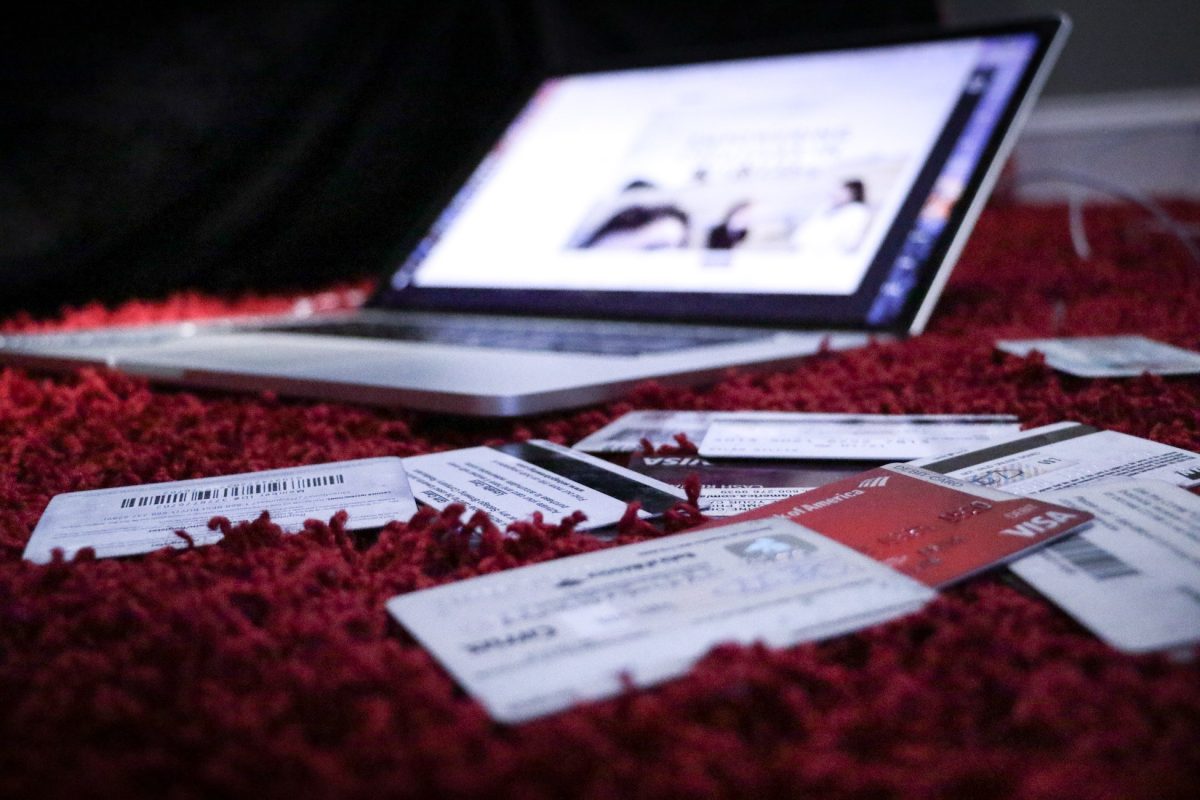Ever felt like your money choices are as confusing as picking between oat milk and almond milk for your morning latte? Welcome to the ultimate showdown between loans vs a line of credit—a no-nonsense, personal finance guide that breaks down the financial fundamentals in a way that’s as refreshing as your favorite iced coffee on a hot day. Whether you’re a millennial hustling to pay off student loans or a Gen Z adventurer ready to make your first major money move, this guide is here to help you navigate your choices with a dash of humor, a sprinkle of real talk, and a whole lot of actionable advice.
Loans Vs a Line of Credit: Personal Finance Guide Table of Contents
Understanding the Basics: Loans and Lines of Credit Uncovered
Key Differences Between Loans and Lines of Credit
How Loans Work: Navigating the Financial Landscape
The Ins and Outs of Lines of Credit
Factors to Consider When Choosing: Loans vs a Line of Credit
Real Life Stories: Loans and Lines of Credit in Action
Strategies to Maximize Your Financial Wellbeing
Comparing Interest Rates and Fees: The Fine Print
Tools and Resources to Empower Your Decision
Resources and Community Support: Your Next Steps
Future-Proofing Your Finances: Making the Most of Loans and Lines of Credit
Frequently Asked Questions About Loans Vs a Line of Credit
Understanding the Basics: Loans and Lines of Credit Uncovered
Let’s get one thing straight: in the grand arena of personal finance, loans and lines of credit are like the Batman and Superman of debt. They both have their superpowers, but knowing which one to call when you’re in a financial jam is key. So, before we start comparing these two financial heroes, let’s break down what exactly they are.
Loans: The Steady, Lump-Sum Lifesaver
A loan, in its simplest form, is a pool of money provided to you all at once—a lump sum that you pay back over time. Think of it like buying a new smartphone: you get the latest gadget upfront, and then you pay for it over a set period with interest. Loans come in many flavors, including personal loans, auto loans, and student loans. They typically feature:
- Fixed Repayment Terms: You know your payment schedule right away, whether it’s monthly, quarterly, or otherwise.
- Predictable Interest Rates: Many loans come with a fixed interest rate, meaning your payments remain consistent over the term of the loan.
- Lump Sum Disbursement: The entire amount is given to you at once.
In short, loans are great when you have a big purchase in mind or need a set amount of funds for a well-planned project.
Lines of Credit: The Flexible, On-Demand Money Machine
Now, imagine having a financial safety net that’s always within reach, like that friend who always has a spare charger. That’s what a line of credit is all about—a revolving source of funds you can dip into as needed. Unlike a loan, a line of credit offers you a credit limit, and you only borrow what you need, when you need it. Key aspects include:
- Revolving Credit: Borrow, pay down, and borrow again—it’s like using your favorite playlist on repeat.
- Variable Interest Rates: Rates may fluctuate, meaning your monthly payments might change depending on economic conditions and your balance.
- On-Demand Access: It’s a flexible resource for ongoing expenses or emergencies.
From handling unexpected expenses to funding home renovations, a line of credit gives you the freedom to control your spending without locking you into a fixed schedule.
Key Differences Between Loans and Lines of Credit
While both loans and lines of credit can provide much-needed cash flow, knowing the differences can help you decide which one is best suited for your financial game plan. Here’s a head-to-head rundown:
1. Disbursement Style
Loan: You receive a one-time lump sum that you must start repaying immediately. This is perfect for major expenses like buying a car or consolidating debt.
Line of Credit: Think of it as a financial faucet set up in your account: you can draw money any time, up to your limit, and only use what you need.
2. Payment Flexibility
Loan: Fixed monthly payments and a set repayment period mean your schedule is predictable—like your favorite TV show’s reruns.
Line of Credit: Payments can be more flexible, allowing you to pay only on the balance you draw, though rates can vary, adding an element of unpredictability.
3. Interest Rates
Loan: Often comes with fixed interest rates, ensuring steady monthly payments without any surprises.
Line of Credit: Typically features variable interest rates, meaning your payments might change if market rates shift.
4. Use Case and Best For
Loan: Best for one-time, large purchases or consolidating high-interest debt—when you know exactly how much cash you need.
Line of Credit: Ideal for ongoing needs, emergencies, or when you require flexible access to funds, like managing monthly cash flow.
Understanding these differences can empower you to choose the financial tool that best aligns with your personal goals and risk tolerance.
How Loans Work: Navigating the Financial Landscape
Loans are a fixture in the financial arena—used for everything from buying your first home to financing higher education. But how do they actually work, and what factors are crucial to making them work in your favor?
Fixed vs. Variable Interest Rates
One of the biggest perks of a standard loan is the ability to lock in a fixed interest rate. This means that your monthly payments remain constant, regardless of market fluctuations. For budgeting purposes, this predictability is like having a financial crystal ball. On the other hand, some loans offer variable interest rates, which can be beneficial if market rates drop—but be prepared for potential increases.
Term Lengths and Payment Structure
Loan terms can vary widely: some are designed to be paid off in just a few years, while others extend over decades. The repayment structure typically includes both principal and interest, and sometimes fees, all of which are calculated to ensure that the loan is fully paid off by the end of the term.
Secured vs. Unsecured Loans
Secured Loans: These require you to provide collateral (like your car or home) to secure the loan. The benefit? Often lower interest rates due to the reduced lender risk. The risk? You could lose your collateral if things go south.
Unsecured Loans: No collateral required, but these loans may have higher interest rates. They’re based solely on your creditworthiness, which means a higher rating can save you money in the long run.
Application Process and Approval Factors
Whether you’re applying for a personal loan, car loan, or student loan, lenders will assess several factors: your credit score, income, debt-to-income ratio, and employment history. A strong financial profile can secure you favorable terms.
Pros and Cons of Taking a Loan
Like every financial decision, loans come with their own sets of advantages and potential pitfalls:
- Pros: Predictable payments, potential for lower interest rates, structured financial planning, and the ability to secure large sums.
- Cons: Less flexibility once the loan is disbursed, risk of asset loss (if secured), and potential long-term debt accumulation.
In summary, loans can be incredibly useful for specific, well-defined financial goals—but they require a commitment to a structured repayment regimen.
The Ins and Outs of Lines of Credit
Lines of credit, while sometimes overshadowed by their more straightforward loan cousins, offer a lifestyle of financial flexibility that can be a breath of fresh air when you least expect it. Let’s dive into how these flexible funds work.
Revolving Credit Explained
With a line of credit, you’re given a maximum borrowing limit, and you only borrow what you need when you need it. It’s like having a credit card without the flashy rewards points—though some lines of credit do come with perks. You make a payment on your balance, and then you’re free to draw again. This revolving nature is ideal for those with fluctuating or unpredictable expenses.
Managing Variable Interest Rates
Unlike many loans, lines of credit often come with variable interest rates. This means that while you might enjoy low rates when the economy is calm, your rates could creep upward in less favorable conditions. It’s vital to keep an eye on the market trends—think of it as financial weather forecasting.
When to Use a Line of Credit
A line of credit is perfect when you need ready cash for ongoing expenses with unpredictable timing. Need to pay for emergency car repairs, fund a home improvement project, or manage seasonal expenses? A line of credit offers the flexibility to cover these gaps without locking you into a fixed sum.
Secured vs. Unsecured Lines of Credit
Much like loans, lines of credit come in two flavors:
- Secured: Often linked to your home or other assets, offering a higher limit and lower interest rate at the cost of potential risk to your collateral.
- Unsecured: Based solely on your creditworthiness, these lines of credit tend to have lower limits and higher interest rates, making them a cautious choice if you’re not confident in your financial resilience.
Pros and Cons of a Line of Credit
Here’s a quick rundown:
- Pros: Unmatched flexibility, pay interest only on the money you use, and can serve as a financial safety net for unexpected emergencies.
- Cons: Variable interest might make budgeting tricky, potential for overspending, and may require a solid credit rating to secure the best terms.
Factors to Consider When Choosing: Loans vs a Line of Credit
Deciding between a loan and a line of credit isn’t a one-size-fits-all situation. Here are some key considerations to help you make an informed decision:
Your Financial Goals
Are you planning a one-time major expense or do you need ongoing access to cash? If it’s the former, a loan might be the best route. For continuous financial fluidity, a line of credit provides the versatility you might need.
Budgeting and Payment Flexibility
Consider your comfort level with fixed payments versus variable ones. If you like the predictability of scheduled payments (like clockwork), a loan offers stability. But if you thrive on flexibility (and a bit of financial spontaneity), then a line of credit will likely feel more up your alley.
Risk Tolerance and Financial Discipline
With great power comes great responsibility. Lines of credit can be a double-edged sword: they give you freedom but can also tempt you to overspend. Assess your financial discipline: are you likely to stick to a repayment plan, or do you need the self-discipline of fixed payments?
Interest Rates and Market Conditions
Given current economic fluctuations, decide whether you can handle variable interest rates or prefer the certainty of fixed rates. Sometimes, locking in a rate with a fixed loan can save you money in the long run.
Your Credit Profile
Your credit score isn’t just a number—it’s your financial passport. A higher credit score can offer you access to better loan rates and credit terms overall. Whether you’re in the market for a loan or a line of credit, a stellar credit profile can secure you favorable terms.
Balancing these factors carefully will set you on the right path, ensuring that your financial strategy aligns with your personal lifestyle and goals.
Real Life Stories: Loans and Lines of Credit in Action
Sometimes the best way to understand a concept is through real-world examples. Meet Alex and Jordan—two friends with very different financial journeys.
Alex’s Loan Adventure
Alex needed to finance his dream kitchen remodel. After weighing his options, he decided on a fixed-term loan. The predictable monthly payments allowed him to plan his budget accurately. Sure, there were moments of sticker shock when reconciling receipts, but that lump sum made his vision a reality. Today, Alex enjoys gourmet cooking in his beautifully remodeled space, all while keeping his finances on track.
Jordan’s Line of Credit Experience
Meanwhile, Jordan is the epitome of flexibility. Running a side hustle that has unpredictable cash flow, Jordan opted for a line of credit. This decision meant that during lean months, she only paid interest on what she actually used, while during cash-flow surges, she could quickly replenish her funds for new investments. The variable nature of her financial tool might seem nerve-wracking at times, but it offers her the adaptable safety net that keeps her thriving.
These stories highlight that the right financial decision is personal—and what works for one person might not work for another. It’s all about matching the tool to your needs, your goals, and your level of comfort with risk.
Strategies to Maximize Your Financial Wellbeing
Whether you lean towards a structured loan or a flexible line of credit, maximizing your financial wellbeing means making smart choices, understanding your spending habits, and planning for the future. Here are some strategies to elevate your money game:
Educate Yourself Continually
Financial literacy is the secret sauce of personal finance success. Stay updated on financial trends, read personal finance blogs, and follow experts who break down complicated topics in a way that’s simple to understand. The more savvy you become, the more empowered you’ll feel making decisions that suit your lifestyle.
Build an Emergency Fund
Even with the best financial tools at your disposal, unexpected expenses are bound to pop up. Building an emergency fund is like having a safety net that protects you from life’s unwelcome surprises. Whether you’re covering a surprise car repair or an unexpected medical bill, having a cushion means you won’t have to rely solely on your line of credit or take on additional debt.
Monitor Your Credit Score
Your credit score is a cornerstone of your financial identity. Regularly check your credit report for inaccuracies, and take steps to improve your score through responsible credit use and timely payments. A higher credit rating not only qualifies you for better loan rates but also unlocks more favorable terms on lines of credit.
Create a Detailed Budget
A solid budget helps you monitor your monthly inflows and outflows. Use budgeting apps or spreadsheets to keep track of your expenses, and adjust your spending habits as necessary. Whether you’re planning to pay off a loan or want to ensure that you’re not maxing out your line of credit, a clear budget can be your best friend.
Set Financial Goals and Review Regularly
Short-term and long-term financial goals act as the roadmap to your financial success. Whether it’s saving for a down payment on a house, paying off student loans, or building an investment portfolio, clearly defined goals can help you stay focused. Regularly review your progress and adjust your strategies—after all, flexibility is key in both life and finance.
Implementing these strategies not only helps you manage your debt more efficiently but also builds a foundation for financial stability and growth.
Comparing Interest Rates and Fees: The Fine Print
One of the most critical aspects that can make or break your financial decision is the fine print—specifically, the interest rates, fees, and any potential penalties. Here’s how these details vary between loans and lines of credit:
Interest Rate Structures
With a traditional loan, the interest rate is often fixed. This offers stability and predictability over the life of the loan, making it easier to plan your budget. In contrast, lines of credit typically have variable rates, which can be lower during periods of economic calm but might increase when the market heats up.
Additional Fees and Charges
Both loans and lines of credit may come with fees such as origination fees, annual fees, or prepayment penalties. It’s essential to review all associated costs before signing on the dotted line. Compare the total cost over the life of the financial product, not just the initial interest rate.
Penalty Clauses
Some loans impose strict penalties for early repayment, while a line of credit usually offers more flexibility but might charge fees if you exceed your limit. Understanding these nuances can help you avoid unexpected costs that could derail your financial plan.
By comparing these aspects side by side, you can judge which option aligns better with your financial lifestyle and goals.
Tools and Resources to Empower Your Decision
In the age of digital finance, you have more resources than ever to make informed decisions. Here are some game-changing tools and resources that can guide you:
Budgeting and Financial Management Apps
Whether you’re a budgeting newbie or a money management pro, apps like Mint, YNAB (You Need A Budget), and Personal Capital can offer insights into your spending patterns. These tools help you track where every dollar goes, making it easier to plan repayments and monitor debt.
Online Loan and Credit Calculators
Before committing to any financial instrument, use online calculators to understand how different interest rates, terms, and fees affect your overall cost. These calculators are a fantastic way to simulate your payment schedule and see the real impact of small interest rate changes.
Financial Blogs and Podcasts
Stay inspired and informed by following financial blogs, YouTube channels, and podcasts. From real-life money-saving hacks to deep dives into economic trends, there’s a wealth of free knowledge available at your fingertips that caters specifically to the millennial and Gen Z audience.
Professional Financial Advisors
Sometimes, the smartest move you can make is to consult a pro. Financial advisors can provide personalized advice based on your unique financial picture, ensuring you’re making informed decisions when it comes to choosing loans versus credit lines.
Equipping yourself with these tools not only demystifies complex financial products but also builds your confidence as you steer your way through the financial jungle.
Resources and Community Support: Your Next Steps
Venturing into personal finance can feel like setting off on a cross-country road trip without a GPS—but fear not! A whole community of financial experts, savvy bloggers, and supportive online forums is ready to join you on this journey. Here are some resources to keep you on track and feeling supported:
Online Communities and Forums
Platforms like Reddit’s r/personalfinance and Facebook groups dedicated to money management are treasure troves of advice, shared experiences, and real-world tips from people who are right where you are.
Local Workshops and Webinars
Look out for local community centers or financial institutions offering workshops and webinars. These sessions can provide personalized guidance and help you ask the right questions about loans and lines of credit.
Financial Literacy Courses
From free online courses on Coursera or Khan Academy to in-person classes at local community colleges, there are plenty of educational resources available. These courses demystify the complexities of interest rates, repayment schedules, and credit scores.
Blogs, Podcasts, and YouTube Channels
Follow trusted personal finance icons who break down complex topics in accessible and entertaining ways. Whether you enjoy bite-sized tips on Instagram or longer deep dives on YouTube, these resources can become your go-to for staying motivated.
Remember, you’re not alone in this journey. Empower yourself with the knowledge and community support you need to make the best financial choices for your life.
Future-Proofing Your Finances: Making the Most of Loans and Lines of Credit
In the ever-changing financial landscape, being proactive is your best bet for success. Future-proofing your finances means staying informed, planning ahead, and always being ready to adapt. Here are some strategies to help you keep your finances on point:
Diversify Your Financial Toolkit
Don’t put all your eggs in one financial basket. Combining different tools—whether it’s a fixed loan for a major purchase or a line of credit for those unpredictable moments—allows you to build a more resilient financial strategy. Embrace both stability and flexibility in your financial planning.
Stay Updated on Market Trends
The world of interest rates, fees, and borrowing conditions is always evolving. Follow reliable financial news sources and consider signing up for newsletters that keep you informed about market trends. A little bit of foresight can go a long way in adapting your strategy.
Regular Financial Check-Ups
Think of your finances like a garden: they need regular care and attention. Schedule periodic reviews of your credit score, your outstanding balances, and your spending habits to ensure everything is in order. Adjust your tactics as necessary, and celebrate the wins along the way.
Plan for the Unexpected
Life is unpredictable, but having a solid emergency fund, a well-structured budget, and a flexible line of credit can help you navigate stormy financial weather. Whether it’s a sudden job loss or an unexpected bill, being prepared means you can handle challenges without derailing your overall financial health.
Taking a forward-thinking approach not only safeguards your future but also empowers you to seize opportunities as they arise with confidence and clarity.
Frequently Asked Questions About Loans Vs a Line of Credit
We know you might still be mulling over some details, so here are some of the most frequently asked questions that can help clear up any lingering doubts about loans versus a line of credit.
1. What is the main difference between a loan and a line of credit?
A loan provides you with a lump sum that you repay in fixed installments, while a line of credit offers a revolving credit limit that you can draw from as needed, paying interest only on the amount you use.
2. Which option is better for a large, one-time expense?
For major purchases, such as a home renovation or a big-ticket purchase, a loan is often ideal because it gives you structured, predictable payments and a clear repayment timeline.
3. When is a line of credit more advantageous?
A line of credit shines when you need flexibility—such as funding ongoing expenses, managing seasonal cash flow, or building an emergency fund—without having to commit to a large, one-time cash outlay.
4. Can I switch from one to the other if my financial needs change?
Absolutely. Your financial needs may evolve over time, so you might start with a loan for a large purchase and then later rely on a line of credit for day-to-day flexibility. It’s all about adapting to your life’s circumstances.
5. How do interest rates affect my choice?
Loans often have fixed interest rates, which means your payments remain constant. In contrast, lines of credit typically feature variable rates that can fluctuate. Consider your tolerance for rate changes when making your choice.
6. What impact does my credit score have?
Your credit score is crucial for both options. A higher score can secure better interest rates and terms, making either borrowing option more affordable over the long term.
7. Are there fees I should be aware of?
Yes, both loans and lines of credit may come with fees such as origination fees, annual fees, or prepayment penalties. Always read the fine print and factor in these costs before committing.
8. How can I decide which option is right for my needs?
Consider your financial goals, need for flexibility, tolerance for variable rates, and your overall financial situation. Analyzing these factors will help you determine whether a steady loan or a revolving line of credit is the best fit.
Your Path to Smarter Financial Choices
Whether you’re leaning towards a structured loan to fund that long-awaited big purchase or prefer the fluidity of a line of credit for everyday financial flexibility, remember: knowledge is power. By understanding the ins and outs of these two powerful financial tools, you’re better equipped to navigate your financial journey—one step, one informed decision at a time.
Embrace the process, learn from your experiences, and never be afraid to ask questions or seek advice. After all, thinking smart about money isn’t just about numbers—it’s about creating a lifestyle that supports your goals, dreams, and personal well-being.
The road to financial empowerment may have its twists and turns, but with the right tools and a clear understanding of your options—whether it’s a loan or a line of credit—you’re well on your way to making decisions that are as forward-thinking and flexible as you are.
So, go ahead. Dive into those applications, review your financial toolbox, and set your course toward a future where every dollar is working smarter for you.
Wrapping It All Up: A Financial Toolkit for Your Journey
Loans vs a line of credit is more than just a debate; it’s a conversation about how you want to manage your financial freedom. With a loan, you get the predictability of fixed payments and a dedicated sum to invest in your dreams. With a line of credit, you have the freedom to maneuver, adapt, and thrive in fluctuating circumstances. Now, armed with these insights, you can confidently tailor your financial strategy to suit your lifestyle.
Remember, it’s not about picking the “better” option universally but choosing the one that fits your unique situation. Keep learning, adjust as needed, and stay curious about how your financial choices can evolve over time. Whether it’s a loan powering your dream project or a line of credit keeping your options open, the ultimate goal is to build a solid financial future that supports your ambitions.
Cheers to making smarter financial choices, taking informed steps every day, and enjoying the journey with a spirit of adventure and plenty of humor along the way.













